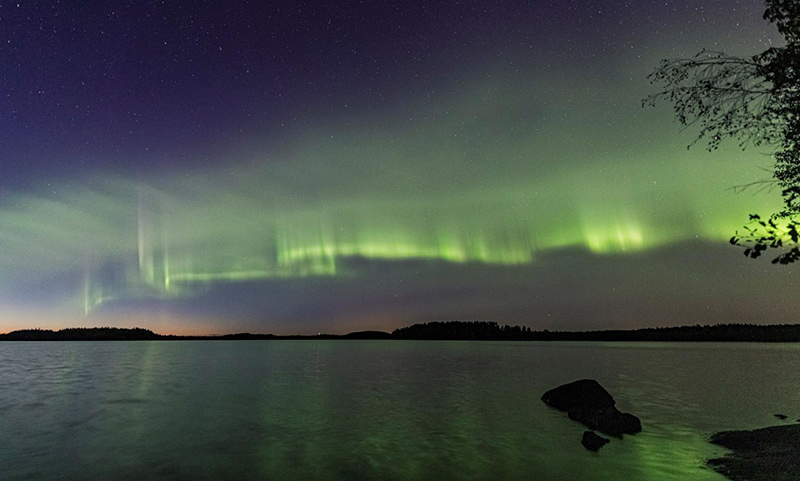
Image credit: Kari Saari
The northern lights, also known as aurora borealis, are a dazzling natural phenomenon that occur when charged particles from the sun enter the earth’s atmosphere and collide with gaseous particles. The resulting display can include various colors and shades of lights that dance across the night sky. While the northern lights inspire awe in any form, not all displays are created equal. In fact, there are several different shapes and types of northern lights, including arcs, bands, pillars and corona. But just recently, hobby photographers documented another form of northern lights that didn’t fit into any of the pre-existing categories. It has been given the name “The Dunes.”
In October of 2018, aurora photographers and enthusiasts from Finland were watching a display that caught their attention as something they had not witnessed before. They quickly enlisted the help of an astrophysics researcher, Minna Palmroth, who had just written a book on aurora.
Palmroth, with the assistance of other researchers, studied the photos and determined which part of the atmosphere the lights originated in, which helped them to characterize the “new” aurora. Eventually, the researchers were able to view the new type of northern lights in real time. It’s been described as “luminous, rippling patterns of waves, like sand dunes on a beach.”
It’s remarkable that Palmroth, the photographers, and the team of researchers were able to identify this unusual form of aurora; the study of northern lights can be challenging due to the fact that the phenomenon occurs at the intersection of space and atmosphere, which is constantly in flux. Nonetheless, their results have now been published in a scientific article. As detailed in the study, they believe that “The Dunes” occur in the mesosphere, at an altitude of around 100 kilometers.
The northern lights remain an intriguing subject to researchers, scientists and hopeful observers. Widespread fascination with the northern lights has helped news of this groundbreaking research to spread quickly. Of course, although “The Dunes” is newly documented, that does not mean that it hadn’t existed before. Discoveries such as this one remind us of the importance of questioning the world around us so that we may continue to uncover the world’s mysteries.
